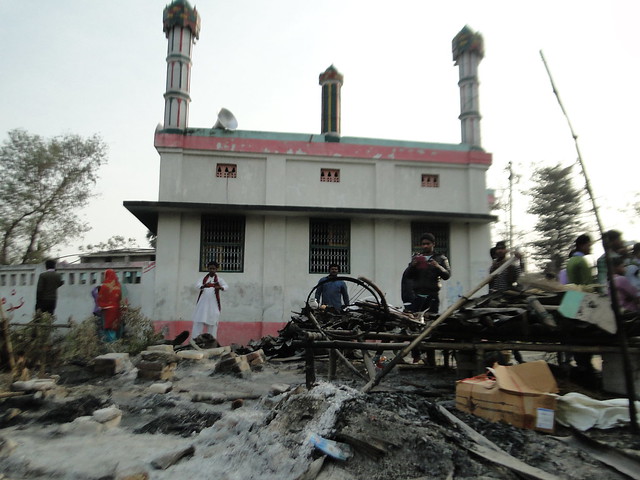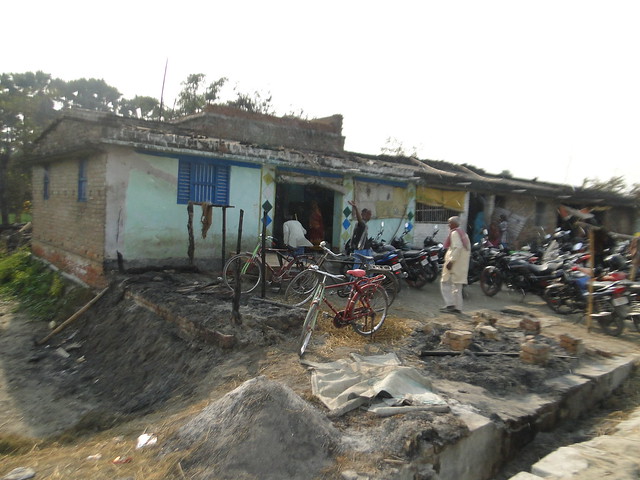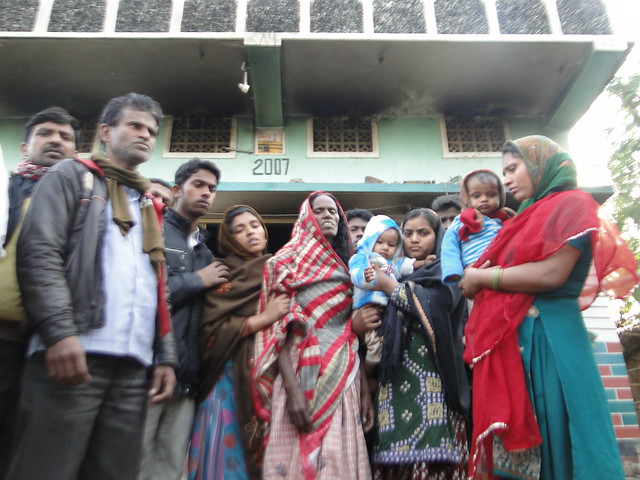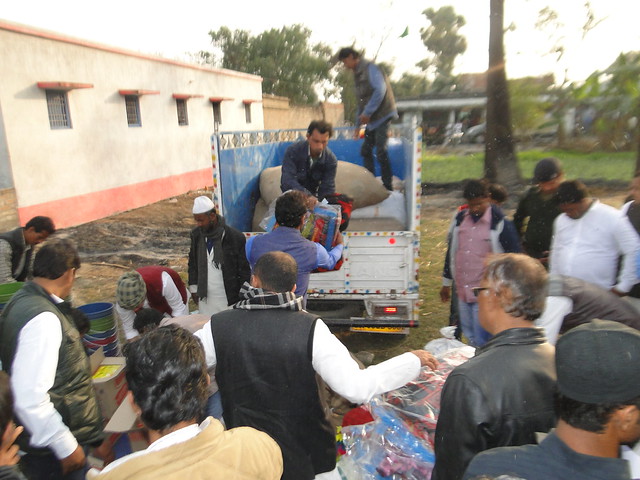The horrific episode from Bihar’s Muzaffarpur is quite different from what happened in UP’s Muzaffarnagar in 2013. The Azizpur-Bahilwara violence may not be said to be a religious violence in a way we have been understanding it conventionally, as non-Mallah Hindus not only remained away from the violence, they are also extending all possible help in protecting the people and in relief measures.
By Dr Mohammad Sajjad,
Violence broke out in Azizpur-Bahilwara village near Saraiya in Muzaffarpur district in north Bihar on January 18. It killed at least five people and almost all the 56 Muslim (Pasmanda) households were looted and burnt. The immediate provocation allegedly was an inter-faith love affair: to the Hindutva zealots, was it a case of ‘Love-Jihad’ in reverse, or a case of ‘Honour Killing’?
A Hindu (by caste Mallah, fishermen) boy named Bhartendu Sahni, 20, (reportedly in love with a girl from Pasmanda Muslim community, both belonging to the same village, and both studying in the same L S College of Muzaffarpur), was missing since January 9. A report about his kidnapping was lodged against a Muslim, nicknamed Vicky Ansari, and his father Wasi Ahmad, of the same village with the Saraiya police. The local police is alleged to have remained rather lethargic on this report of kidnapping despite the fact that this issue did carry a very high degree of communal volatility and sensitivity, given the fact that the accused of kidnapping were the Muslim girl’s brother, Vicky Ansari and the father Wasi Ahmad, and that the marriage of the two was being resisted at least by the girl’s family.

The step mother of the girl happens to be from a low caste Hindu, Kahaar. Conversely put, Wasi Ahmad’s second wife is a Hindu, yet he is reportedly opposed to an interfaith marriage of his own daughter. Wasi Ahmad is also a small time advocate (of little or modest income) in the district court of Muzaffarpur and also supplements his income as commission agent of the non banking financial institution – SAHARA; one of the lucrative branches of SAHARA is in Saraiya, a fast growing semi- urban centre in the district of Muzaffarpur, on the way to historic village Vaishali.
Just few months ago (in October-November 2014), ahead of the Chhath puja (Sun god worship, the most important Hindu festival of Bihar), in another village, Turkauliya, of the same Saraiya-Paroo thana areas, there was acute communal tension between Hindu Mallahs and (Pasmanda) Muslims, and the violence could be avoided in early November 2014 only with prompt administrative interventions, prolonged persuasions, as also with the initiatives of the local people for inter-community dialogues.
The District Magistrate of Muzaffarpur personally camped in Turkauliya and sat down with the local residents for comprehensive discussions on the whole dispute. Here, a (Pasmanda) Muslim was alleged to have thrown a huge heap of human shit, taken out of the his overflowing and congested septic tank into the irrigation canal, in which the Chhath puja is performed every year since ages. It is said that a Muslim lumpen (Paan shop owner) asked him to do so otherwise usually people make use of such human shit as highly fertile manure for their crops in the fields. This illiterate lumpen has got some political aspirations and keeps throwing tantrums to mobilize/rally his co-religionists behind himself. He seems to be trying to succeed his friend, another criminal of the village Turkauliya, who was killed in October 2013.
Such characters in the rural society often aspire for becoming a cognizable face among the local politicians and officials, which they take as their upward social mobility. From my personal knowledge, as an insider of the village Turkauliya, I do know how illegal arms were collected by the Muslims and Mallahs in and around Turkauliya in October-November 2014 and even then, the local police feigned ignorance about all these menacing developments.

On January 18 this year, a farmer of Azizpur-Bahilwara, having gone to put fertilizer in his wheat fields suddenly found out that dogs were digging to remove soil and suddenly a human hand came in sight. It was close to the village mosque. A heartrending, incendiary brutality! It was a dead body, which turned out to be of the same boy, Bhartendu Sahni, whose kidnapping was reported to the Saraiya police on January 9. And thus sparked off the retaliatory violence! Reportedly, a huge mob came with lot of crude and sophisticated weapons, petrol cans, which suggests that ever since January 9, there were preparations of violence. That the local police are naive enough to have remained ignorant about this simmering discontent is just not to be believed.
Ironically, the BJP MLA of Paroo-Saraiya, Ashok Singh’s native village and his base for political operation and for everyday political transaction is almost adjacent to this unfortunate village of Azizpur-Bahilwara. There are reports alleging that the BJP MLA created some obstruction in letting the police reach the spot of violence. There are also reports that the girl’s brother Vicky is close to Singh. Quite a lot of local people confide that Singh, being the protector of the accused Vicky Ansari, could possibly have made the police ignore the issue.
Significantly, almost every village is having its own lumpens and criminals but, at least since June 2013 (when JDU-BJP coalition broke away), the Muslim lumpens and criminals are acting in tandem with local BJP functionaries with an argument for Muslim consumption that these lumpens are working towards Chief Ministership of Syed Shahnawaz Husain of the BJP.
It is no secret among the local residents that these Muslim lumpens are on a kind of pay-rolls of the BJP and its affiliates. This is what I could find out in conversations with such characters in few villages, when I was spending my summer vacations in my native village, Turkauliya, in June 2013.
Let it also be mentioned that just after the recent Jharkhand elections, the RSS camps have become too busy in rural, semi-urban and urban spaces of Bihar. They interact with, and indoctrinate, the deprived sections of the historically disadvantaged groups, who think they are getting social elevation and at least some degree of social respectability through these RSS camps. This is what I observed during my visit to the villages across Muzaffarpur, Samastipur and Patna in the early weeks of January 2015.

Having said all these, a history of the politics and economy of the region may also help us understand the simmering and recurring tensions.
It could possibly be an irony that this village is very near to the historic village of Vaishali, the birth place of Lord Mahavir, and associated deeply with Lord Buddha too, both saints from the 6th century BC known for spreading the message of peace and non violence. Besides, a popular shrine of 15th century Sufi saint Shaikh Qazin Shuttari (d. 1495) venerated by every religious and caste groups. The annual Urs (death anniversary) of this Sufi is a testimony of syncretic traditions and religious harmony in this locality. There is also an annual fair called Bawana mela. This shrine exists atop a Buddhist stupa.
Significantly, at least in post-independence period, Muzaffarpur has remained almost absolutely free from communal violence. Only those parts of Muzaffarpur, which now constitute the districts of Sitamarhi and Sheohar, had seen some major communal violence in post-Independence period. Even in late-colonial period, only major communal violence of Muzaffarpur is the one in the village of Benibad (September 1946) and here too, the immediate cause was an inter-faith marriage. A Muslim of the village Benibad, Ali Hasan, working in Calcutta had married a Hindu girl of Calcutta named Kalyani Dey (renamed as Nur Jahan). This provoked the local people and with the initiatives of the Arya Samaj, a major violence broke out. The police could not control it as quickly because of the mechanical breakdown of the truck carrying a troupe of police.
However, in recent years, more particularly, ever since the breakdown of coalition between the BJP and the JDU in Bihar in June 2013, things have started changing for worse very rapidly. India witnessed major communal tension and violence during the 1920s, 1940s, 1980s, and ever since then communal tension has been a sad reality of our lives besides the caste based oppressive discriminations which has been existing since ancient times in our civilization. Incidentally, these were the decades when growing affluence among the Muslims created middle classes, and thereby ensued competitions and rivalries in all walks of life—education, politics, share in power, trade and manufacturing, etc.
The Pasmanda Muslims of Azizpur -Bahilwara village have also acquired perceptible prosperity only recently. They may not be acquiring much of education but their trade in tyre-tube repair and sales, and in motor-parts, quite a few in Asansol and elsewhere, and few others in blue-collar jobs in the West Asia, is also fuelling aspirations of shares in the structures and processes of power, particularly in the Panchayat elections. This was already becoming an eye-sore among a section.
Another cause of economic conflict is: in the local haats and markets, the poultry chicken sellers are usually Muslims, but of late, some (Hindu) Mallahs have also jumped into this business. This should also be brought to fore that in the Bihar villages of today, migrations for livelihood have made male presence very minimal, and some of the few unemployed youth who stay here in villages, also degenerate to become lumpen-criminal cum broker of nationalised banks, of police thanas, and in the community development blocks from where the Panchayat development funds and the funds for social welfare schemes flow.
There are reports in the whispers and gossips of the villagers that ever since Nitish Kumar led administration launched a crackdown against punishing the criminals, many of these lumpens-criminals took recourse to another form of crime — indulging in flesh-trade and this is said to be one of the ways of bribing the sections of local officials, police, and politicians. There are reports that the Guest House of the Tourism Department of the Bihar government in Vaishali is often misused illegally for such ugly, perverse, and heinous activities. Not every lady (bahu-beti as the local population puts it) thrown into this muck has gone in greed or in distress; quite a lot of them are trapped and blackmailed (video recording with cell phone is quite handy in this nasty exercise) and then there becomes a situation of no return from this sex-racket run by the criminal-police nexus.

These local functionaries, in order to protect such criminals, often mislead the higher echelons of the administration and this is how containing the criminals is increasingly becoming difficult. It is said that one can find an injection ‘Fortwyn’ – meant for making a person (to be kidnapped for ransom) instantly unconscious – very easily in the local medicine shops. In one of my books on the Muslims of Muzaffarpur, I have given a long chapter on a Muslim inhabited village, Turkauliya, profiling a criminal of the village who grew strength by strength through active support of his community as well as the local officials of the state. Such outlaws become community heroes and eventually turn into politicians very soon. Thus, crime, violence, and such ugly phenomena are increasingly getting deeply embedded in our social fabric.
Thus far, in most cases of the communal riots, the rioters have gone scot free. In fact, one of the biggest failures of the Indian democracy has been the utter failure of the criminal justice system in punishing the rioters and riot-mongers.
In today’s Muzaffarpur comprising Muzaffarpur and Vaishali Lok Sabha seats, the Hindu ati pichhrha caste of Mallahs (carrying surnames of Nishad, Sahni and sometimes Manjhi also) have become the ‘dominant caste’, replacing the Rajputs, the Bhumihar-Brahmans and Yadavas, Koeris, Kurmis too. Many times, Muzaffarpur has elected its Parliamentarian from the community of Mallah, including the incumbent one from the BJP. In the Vaishali Lok Sabha (Azizpur-Bahilwara of Saraiya-Paroo falls under Vaishali Lok Sabha, they have elected Rama Singh of LJP in alliance with the BJP, defeating RJD’s Professor Raghuvansh Prasad Singh). The JDU candidate here in 2014 was a Mallah and unlike most of Bihar’s parliamentary seats, the JDU candidate from Vaishali had secured a very significant number of votes in May 2014. This vote share secured by the JDU may not be going down well with the BJP-LJP combine. This could be a possible reason why Mallah-Pasmanda conflict is becoming a sub-terranean menacing reality of this locality.
This region is also infested with the Maoists and quite often press statements from local politicians would complain that most of Maoists are Mallahs. In fact, in the 2010 assembly elections of Bihar, the Paroo’s sitting BJP MLA Ashok Singh had to face the ire of the Mallahs for having made a statement in the press that most of the Maoists belonged to the community of Mallahs. Cutting across religious and caste-barriers, the local population would express certain degree of scare about the Mallahs, about their community-solidarity and how they prone to violence and aggression. This is a kind of stereotype about the Mallahs that exists among the local population. In this way, the Azizpur-Bahilwara violence may not be said to be a religious violence in a way we have been understanding it conventionally, as non-Mallah Hindus not only remained away from the violence, they are also extending all possible help in protecting the people and in relief measures. In fact, today, the local people – Hindus and Muslims – vehemently react against the media for portraying it as a conventional religious strife.
Therefore, if at all there is any attempt by any communal organisation to create Hindu-Muslim polarisation or an attempt to create a communal wedge between the ati picchrha communities of Hindus and Muslims for the purposes of the forthcoming assembly elections in Bihar in October-November 2015, then it could possibly be seen as a gratifying silver line as both Hindus and Muslims stand united to get the culprits of Azizpur-Bahilwara booked.

The Saraiya police was allegedly lethargic in arresting the killers of Bhartendu Sahni, the boy in love, which degenerated and spiralled into a more sinister group-violence, but the state response to this violence has since then been very prompt. There are reports that quite a large number of accused – including the alleged killers of the loving boy, Vicky Ansari – have been arrested, but his father Wasi Ahmad is yet to be arrested. Local population across the religious divide is of the opinion that Wasi is a gentleman, and the parents of Bhartendu happen to be longstanding close friends of Wasi. High-placed enquiries are underway, payment of compensation, and relief measures from the state are also said to be satisfactory in an unprecedented way. Quite a large number of alleged offenders have been put under arrest within the quickest possible time. Many police and other administrative personnel have been pulled up and taken to task, and further action against them, are being contemplated.
The Deputy Superintendent of Police (Dy SP) and the Station House Officer (SHO, Saraiya) have reportedly been put under suspension. The trust of the victims in the administration and in the local society has been restored so fast that quite quickly all affected have started coming back to their villages where the state has provided few thousands of bucks only for purchasing utensils and kitchen-wares besides bigger amounts as compensation to the injured ones and even bigger amount to the survivors of the deceased ones. Cutting across religious barriers, the whole locality is standing with every kind of help and support to all the victims.
Public opinion in the locality is displaying a genuine outrage against the whole incident. Even an ex-zamindar of Azizpur, Professor Lalmohan Singh, who taught Psychology in the local government degree college of Jaintpur (estate), and superannuated recently, and has been associated with the BJP as well, would express his fury and anger against this insanity involving violence and loot. His own Hindu and Muslim domestic aides played significant roles in protecting many fugitive victims. One of them has been awarded Rs 51 lakh by the Chief Minister for his brave role in protecting the Muslim victims. He too is contributing, materially and otherwise, towards resettlement of the victims.
This horrific episode of January 18 in Bihar’s Muzaffarpur is quite different from what happened in UP’s Muzaffarnagar in September 2013. We probably don’t have competitive efforts of politicians to polarise the two communities. Akhilesh Yadav-led administration as well as the riot-mongers among our political formations, need to learn a few lessons from this response of the state and the society into this violence of Bihar’s Muzaffarpur.
—–
(Dr Mohammad Sajjad is Assistant Professor at Centre of Advanced Study in History, Aligarh Muslim University and author of Muslims of Muzaffarpur since 1857).
(Photos by Mudassir Rizwan, TwoCircles.net)
Related:
Hindu widow saved 10 Muslims in Bihar riots
Five policemen suspended over Muzaffarpur riots
Bihar: Fourteen held in connection with Muzaffarpur village riots; situation under control
